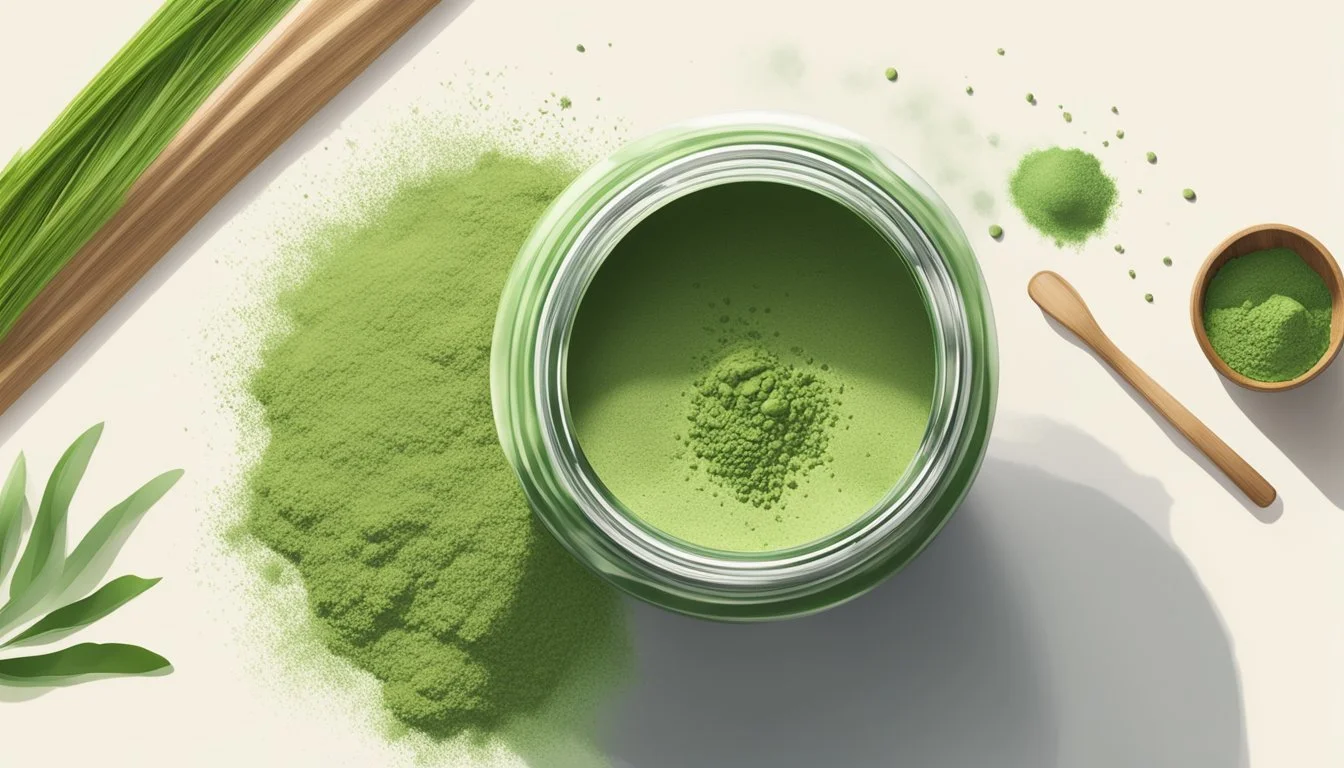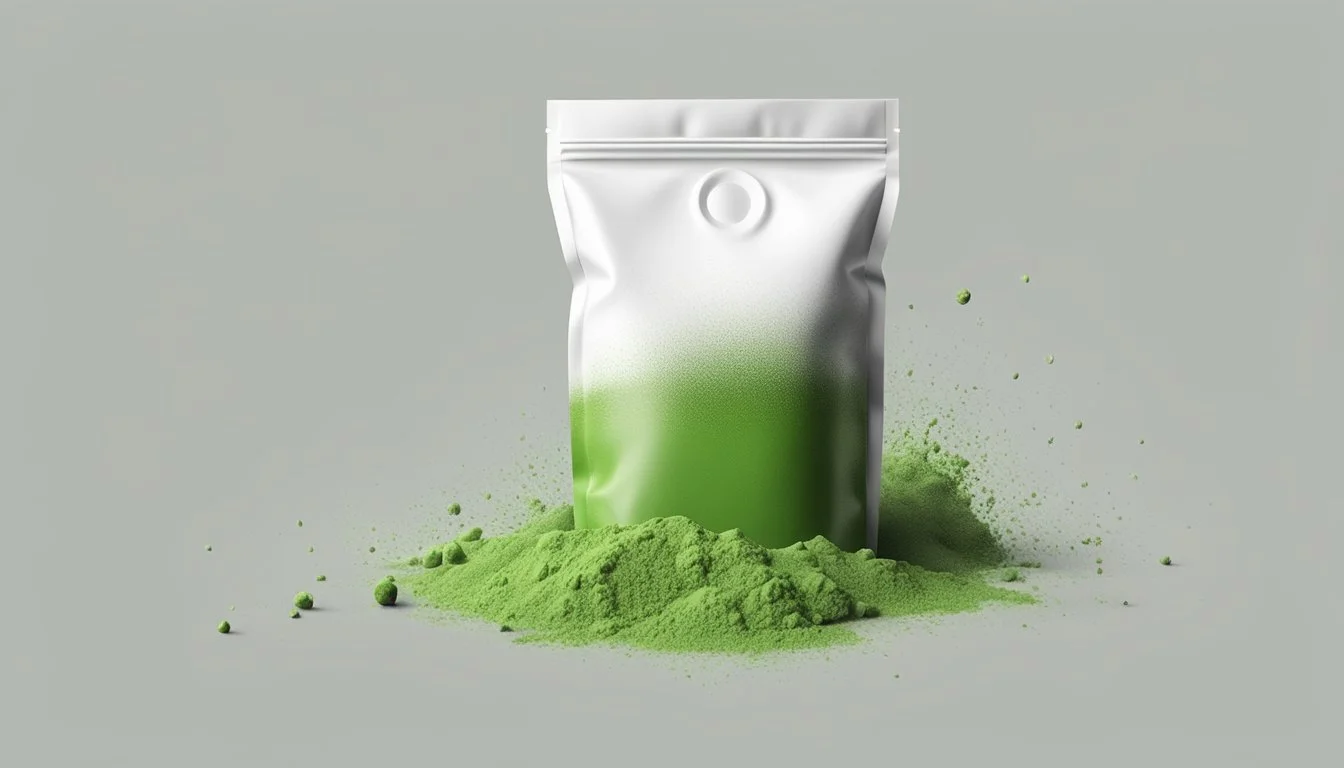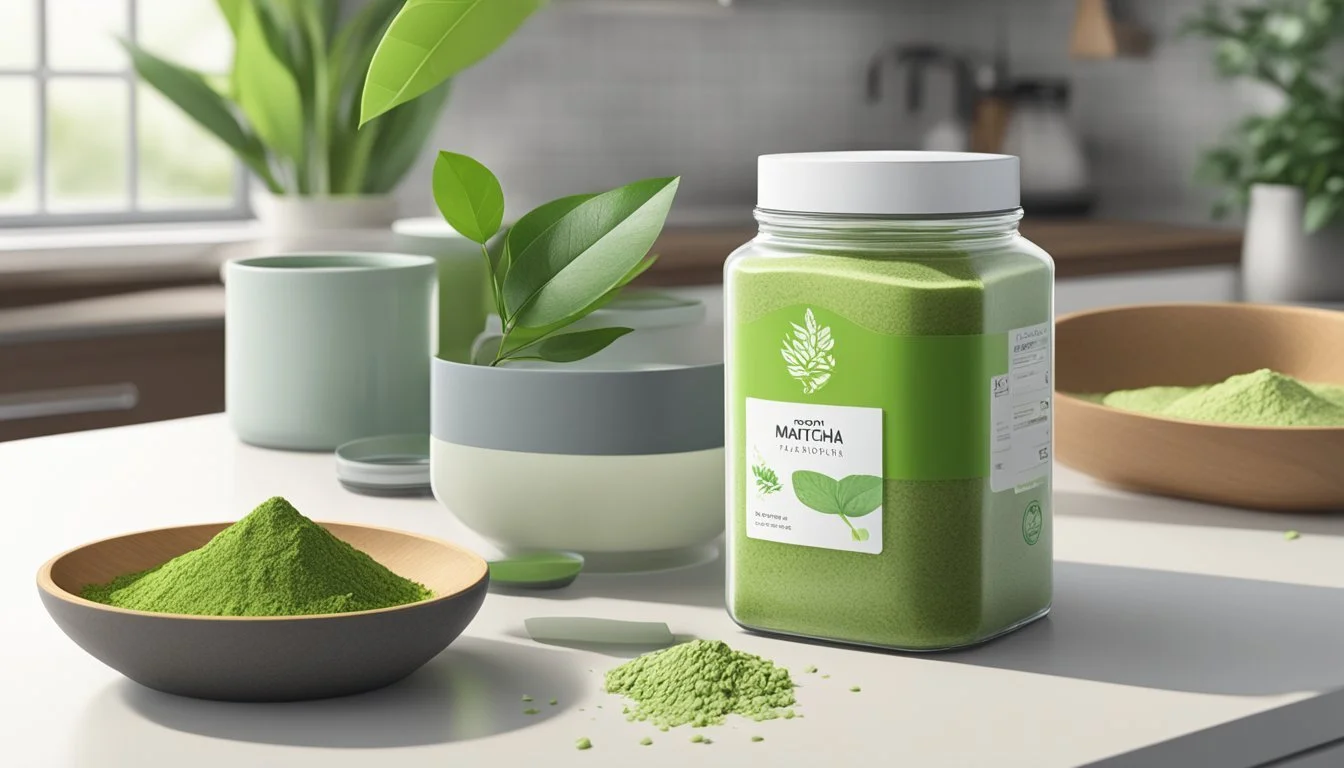Does Matcha Powder Go Bad?
Understanding Its Shelf Life and Storage
Matcha powder, a finely ground powder of specially grown and processed green tea leaves, is well known for its vibrant green color and has become a favored ingredient in beverages and cooking. Its shelf life is a matter of quality rather than safety; matcha does not spoil in a way that makes it unsafe to consume, but rather its flavor and color degrade over time. While matcha is stable, it's best enjoyed when fresh to maintain its distinct grassy taste and the full spectrum of its health benefits.
Like many dried goods, matcha powder comes with a 'best by' date that suggests when to consume it for optimum quality. Matcha's shelf life varies depending on whether it is unopened or opened. An unopened package can last between 6-12 months. Once opened, matcha powder's freshness is best preserved for about 4-5 months. Over time, one may notice the vibrant green color fading to a more yellowish hue, and the once rich umami flavor becoming increasingly bitter as it loses potency.
Proper storage is crucial in extending the shelf life of matcha powder. It should be kept in a cool, dark place, and most importantly, away from air and moisture. When stored correctly, matcha powder may maintain its quality past the indicated 'best by' date, though the gradual loss of flavor intensity and nutritional value is inevitable. It is advised to buy matcha in quantities that one can consume within a short period to enjoy the best experience that this unique powder can offer.
Understanding Matcha Powder
Matcha powder, a traditional Japanese green tea, has gained worldwide acclaim for its distinctive taste and health properties. This section details its historical background, different quality grades, and nutritional benefits.
Origins and Production
Matcha originates from Japan where it is produced with rigorous attention to detail. The process begins with green tea leaves, known as tencha, which are shaded from the sun for about three weeks before harvest. This shading method enhances the leaves' chlorophyll levels, giving matcha its vibrant green color and increasing the presence of amino acids. Once harvested, the leaves are steamed, dried, and stone-ground into a fine matcha powder.
Shading: Increases chlorophyll and amino acids
Harvesting: Selective process to pick finest leaves
Processing: Steaming, drying, and stone grinding
Ceremonial vs. Culinary Grades
Matcha is offered in various grades, each serving different purposes. Ceremonial grade matcha represents the highest quality, intended for traditional tea ceremonies. It is characterized by a fine texture and a bright, umami-rich flavor profile. Culinary grade matcha, while still high in quality, is inteded for cooking and has a more robust, slightly bitter taste, making it suitable for recipes that require matcha as an ingredient.
Ceremonial Grade: Fine texture, vibrant color, rich flavor
Culinary Grade: More robust flavor, suitable for cooking
Health Benefits and Nutritional Value
Matcha is celebrated for its health benefits, as it is packed with antioxidants such as EGCG (epigallocatechin gallate). It also contains vitamins A and C, caffeine, and other beneficial nutrients that promote wellness. Due to its whole leaf consumption, matcha provides a more potent nutrient package than standard green tea. The presence of the amino acid L-theanine is said to induce a state of relaxed alertness, pairing the caffeine content with a calming effect.
Antioxidants: High levels of EGCG
Amino Acids: Contains L-theanine for relaxed alertness
Vitamins and Nutrients: Includes vitamins A, C, and caffeine for a nutritional boost
Factors Influencing Matcha Shelf Life
Preserving the freshness and quality of matcha powder relies on mitigating factors that can accelerate degradation. Careful consideration of storage conditions and understanding the physical properties of matcha can contribute to extending its shelf life.
Exposure to Elements
Light: Direct sunlight can degrade the vibrant green color of matcha through a process known as photooxidation. It is advisable to store matcha in dark, light-avoidant containers.
Air and Humidity: Matcha's exposure to air and humidity can initiate the oxidation process, leading to loss of flavor and color. Storing matcha in airtight containers with minimal headspace can reduce this risk. Moreover, keeping matcha in an environment with controlled humidity levels helps prevent clumping and mold growth.
Temperature: Elevated temperatures can hasten the oxidation and degradation of matcha powder. Maintaining a consistent, cool storage temperature away from heat sources is crucial.
Physical State and Processing
The texture of matcha should be a fine, smooth powder. Processing methods that produce a finer powder can result in a longer shelf life due to reduced exposure to oxidizing agents. However, once the powder begins to clump or appear gritty, this can be a sign of moisture exposure and quality decline.
Packaging and Expiration Details
Expiration Date: While matcha powder does not "expire" in the traditional sense, it does have a best-by or expiry date typically ranging between 6 to 12 months from the production date.
Packaging: Proper packaging is key for preserving matcha's quality. It should be packaged in light-resistant and airtight containers. Unopened matcha can last for 1 to 2 years under ideal conditions, but once opened, it's best to consume within 2 to 3 months for optimal freshness.
Proper Storage Techniques
Maintaining the freshness and quality of matcha powder significantly depends on how it is stored. Proper storage helps in preserving its flavor, color, and nutritional benefits.
Choosing the Right Containers
When storing matcha, choosing an airtight container is essential. Air exposure can degrade matcha's quality by introducing moisture and other contaminants. For best results, transfer matcha from its original packaging into an air-tight container made of non-reactive materials such as glass or tin. If the original packaging is resealable and ensures airtightness, it may also serve as a suitable option.
Ideal Storage Conditions
Matcha powder requires a cool, consistent temperature, and a dark place away from direct sunlight to retain its potency. A pantry or a cabinet away from heat sources is an ideal location. Fluctuating temperatures and light exposure can lead to a decline in quality, so it is important to find a storage space that is stable and cool.
Refrigeration vs. Room Temperature
An unopened package of matcha can be stored in the refrigerator to extend its shelf life. However, once opened, it's preferable to store matcha at room temperature rather than refrigerating it. This avoids any condensation and subsequent clumping when the matcha is taken in and out of a cold environment. If the matcha will not be consumed quickly, the fridge can still be used, but it’s important to ensure the powder is in a completely airtight container to prevent any moisture from affecting its quality. Freezing matcha is generally not recommended, especially for opened packets, as it can alter the flavor profile of the tea.
Identifying Spoiled Matcha Powder
To maintain the integrity of matcha powder and ensure a pleasurable experience when consuming it, recognizing the signs of spoilage is essential. Here are the specifics on how to detect changes that may indicate your matcha powder is past its prime.
Changes in Color and Texture
Color Test: Fresh matcha powder is known for its vibrant green color, indicative of its quality and freshness. Over time, if the matcha starts to appear dull, yellowish, or brown, it suggests that the powder may be stale. This color change often correlates with a diminished flavor profile.
Texture Analysis: A quality matcha powder has a fine, smooth texture without lumps. Spoiled matcha may develop clumps or appear grainy, which could result from moisture exposure.
Altered Taste and Aroma
Taste: Matcha is celebrated for its unique blend of earthy and umami flavors with a slight natural sweetness. When matcha powder begins to expire, it often becomes bitter and lacks the nuanced finish associated with fresh matcha.
Smell: A fresh matcha emits a distinct grassy scent. An alteration in aroma, such as a loss of this earthy smell, can signal that the matcha is not at its best potency.
Visible Signs of Contamination
Mold: Any visible signs of mold or other contamination mean the matcha powder should not be consumed. Safety should be a priority with any spoiled food item.
Lumps: While lumps can be an indicator of moisture, it is also important to be cautious, as they can harbor mold growth not immediately visible to the naked eye.
Usage and Consumption Guidelines
Matcha powder is a versatile ingredient with a distinct umami flavor that can both enhance culinary dishes and create a richly-flavored tea. Its freshness influences not only the taste but also the efficacy in recipes and beverages.
Culinary Applications
Matcha powder is more than just a tea; it's a culinary chameleon. Culinary grade matcha is ideal for cooking and baking, infusing umami flavor into a variety of dishes. It makes an excellent ingredient for vibrant and flavorful baking recipes, such as:
Waffles and crepes
Custards and puddings
Ice cream and frozen yogurts
It is also commonly used in smoothies for a nutrient-packed drink. Due to its concentrated flavor, a little goes a long way. Maintain the balance in recipes to avoid overpowering bitterness.
Brewing the Perfect Matcha Tea
When preparing matcha tea, the key to a superior cup lies in the quality of the matcha powder. Fresh, high-quality matcha will have a rich, bright green color, and a creamy, sweet umami flavor with minimal bitterness. To brew, sift 1-2 teaspoons into a bowl, add hot water (just shy of boiling), and whisk until frothy. For best results, use powder that's been stored in a cool, dark place, and consume it within 1-2 months after opening.
When to Replace Your Matcha Powder
While matcha powder doesn't become unsafe to consume, its flavor can significantly deteriorate. One can detect staleness from:
A dull, yellowish hue replacing the vibrant green
A lack of the characteristic umami flavor, often accompanied by an increase in bitterness
Ideally, consume matcha powder within 6-12 months of opening. If any of these changes are noticed, or if the product surpasses its best-by date, consider replacing it to ensure the best flavor and culinary experience. It is recommended not to seek medical advice from matcha consumption guidelines.
Ensuring Quality and Freshness
When preserving the quality and freshness of matcha powder, proper storage is crucial. Matcha, being a delicate food product, is susceptible to deterioration from light exposure, temperature changes, and moisture. An airtight container is fundamental to prevent the matcha from absorbing unwanted odors and humidity, which could degrade its fine, fluffy texture and vibrant umami flavor.
It’s recommended to store matcha in a cool, dark place away from direct sunlight. Areas with consistent temperature are preferred as temperature fluctuations can lead to condensation inside the container, which in turn compromises the quality of the powder. For maintaining best quality, some users might opt to store their matcha in a refrigerator, but this should always be done in an airtight container to avoid the powder absorbing flavors from other food products.
Matcha should retain a bright green color, a sign of its freshness and beneficial compounds. A change in color to dull green or yellow might suggest that the matcha is no longer at its peak quality. For processed matcha, the expiration date provided is a good guide to its shelf life, typically marked at around two years. Nonetheless, once opened, matcha powder can last 4-5 months with proper storage.
Avoid freezing matcha as this can affect both texture and taste, and might not present the froth well when whisked. Freshness in matcha not only influences its ceremonial charm but also determines the level of enjoyment one can derive from it. Inferior matcha, or improperly stored matcha, will lack the complexity and depth that characterizes a high-quality matcha experience.






